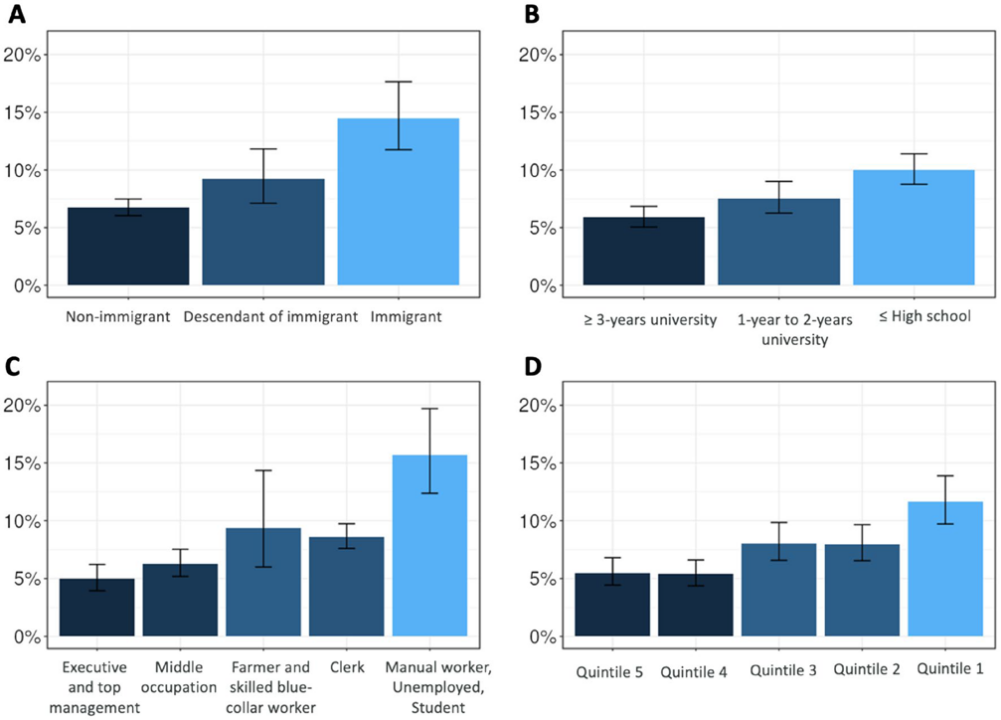The inverse socio-economic gradient of child overweight is now well established in high-income countries. However, the influence of migration status on the onset of such social inequalities has been less extensively studied. Our study aimed to assess the risk of overweight in 3.5-year-old children according to both the mother’s migration status and socioeconomic characteristics, such as education level, occupational category, and household income level.
We analyzed data from 9,250 children from the national ELFE cohort, averaging 3.5 years of age. The risk of overweight was respectively 2.2 and 1.4 higher in children born to immigrant and descendants of immigrant mothers, compared to children of non-immigrant mothers. These excess risks persisted even after accounting for the other dimensions of socioeconomic position, suggesting a direct effect of migration status.
Although the study confirms a gradient of overweight according to the mother’s education level, this graduated link was less clear for occupation and household income, suggesting threshold effects for these two indicators. The concept of gradient is thus not uniformly applicable to all dimensions of socioeconomic position. In the end, the children most at risk were those born to immigrant and descendants of immigrant mothers, those whose mothers were workers or unemployed, or those from low-income families. These factors must be precisely considered for better social equity in the design of childhood obesity prevention interventions.
These findings provide essential perspectives to guide future public health policies. However, it remains crucial to conduct more research, in order to identify other facets of social vulnerability. This will help us better understand the underlying mechanisms that influence and modulate the effects of social determinants on child overweight.
Camille LE GAL
Le Gal C, Lecorguillé M, Poncet L, Cisé AH, Gassama M, Simeon T, Lanoë JL, Melchior M, Bernard JY, Charles MA, Heude B*, Lioret S*. Social patterning of childhood overweight in the French national ELFE cohort. Sci Rep. 2023;13(1):21975. doi:10.1038/s41598-023-48431-8

Figure 1: Prevalence of overweight (including obesity, IOTF definition) in 3.5-year-old children from the Elfe cohort according to parents’ socioeconomic position and migration status: (A) Mother’s migration status (n = 8998); (B) Mother’s education level (n = 8928); (C) Mother’s socio-professional category (n = 9250); (D) Quintiles of household income per consumption unit (n = 8727).